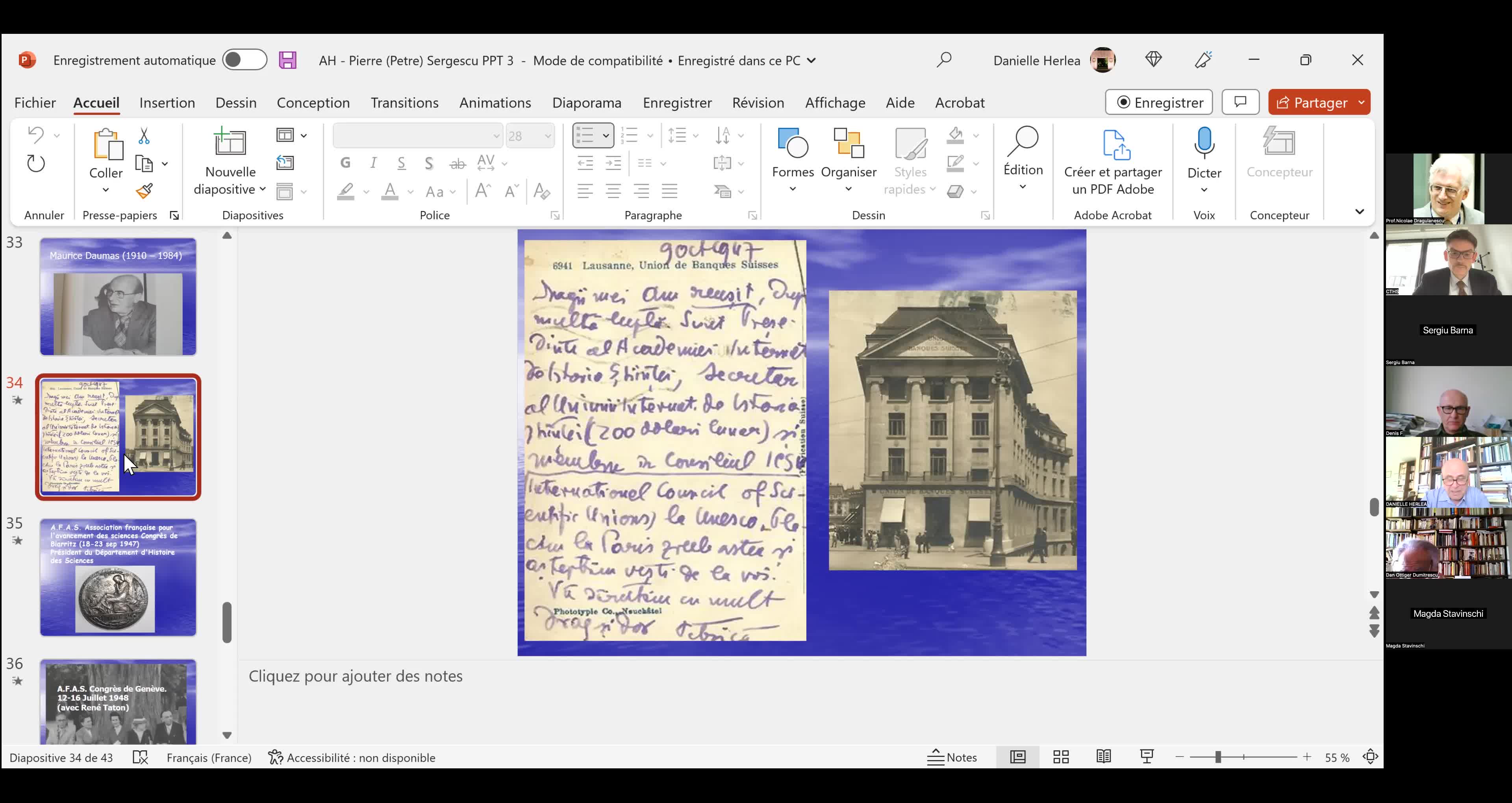Notice
Joseph Fu - Integral geometric regularity (Part 5)
- document 1 document 2 document 3
- niveau 1 niveau 2 niveau 3
Descriptif
In the original form given by Blaschke in the 1930s, the famous Principal Kinematic Formula expresses the Euler characteristic of the intersection of two sufficiently regular objects in euclidean space, integrated over the space of all possible relative positions, in terms of geometric invariants associated to each of them individually. It is natural to wonder about the precise regularity needed for this to work. The question turns on the existence of the normal cycle of such an object A, i.e. an integral current that stands in for its manifolds of unit normals if A is too irregular for the latter to exist in a literal sense. Despite significant recent progress, a comprehensive understanding of this construction remains maddeningly elusive. In these lectures we will discuss both of these aspects.
Intervention / Responsable scientifique
Thème
Documentation
Liens
Dans la même collection
-
Matthias Röger - A curvature energy for bilayer membranes
RögerMatthiasA curvature energy for bilayer membranes
-
Giovanni Pisante - Duality approach to a variational problem involving a polyconvex integrand
PisanteGiovanniDuality approach to a variational problem involving a polyconvex integrand
-
Neshan Wickramasereka - Stability in minimal and CMC hypersurfaces
WickramasekaraNeshanindisponible
-
-
Gian Paolo Leonardi - Towards a unified theory of surface discretization
LeonardiGian Paoloindisponible
-
-
-
-
-
-
Free discontinuity problems and Robin boundary conditions
GiacominiAlessandropar Alessandro Giacomini, université de Brescia
-
Avec les mêmes intervenants et intervenantes
-
Joseph Fu - Integral geometric regularity (Part 1)
FuJoseph H. G.In the original form given by Blaschke in the 1930s, the famous Principal Kinematic Formula expresses the Euler characteristic of the intersection of two sufficiently regular objects in
-
Joseph Fu - Integral geometric regularity (Part 4)
FuJoseph H. G.In the original form given by Blaschke in the 1930s, the famous Principal Kinematic Formula expresses the Euler characteristic of the intersection of two sufficiently regular objects in
-
Joseph Fu - Integral geometric regularity (Part 2)
FuJoseph H. G.In the original form given by Blaschke in the 1930s, the famous Principal Kinematic Formula expresses the Euler characteristic of the intersection of two sufficiently regular objects in
-
Joseph Fu - Integral geometric regularity (Part 3)
FuJoseph H. G.In the original form given by Blaschke in the 1930s, the famous Principal Kinematic Formula expresses the Euler characteristic of the intersection of two sufficiently regular objects in
Sur le même thème
-
Tuan Ta Pesao : écritures de sable et de ficelle à l'Ile d'Ambrym
VandendriesscheEricCe film se déroule au Nord de l’île d’Ambrym, dans l’archipel de Vanuatu, en Mélanésie...
-
"Le mathématicien Petre (Pierre) Sergescu, historien des sciences, personnalité du XXe siècle"
HerléaAlexandreAlexandre HERLEA est membre de la section « Sciences, histoire des sciences et des techniques et archéologie industrielle » du CTHS. Professeur émérite des universités, membre effectif de l'Académie
-
Webinaire sur la rédaction des PGD
LouvetViolaineRédaction des Plans de Gestion de Données (PGD) sous l’angle des besoins de la communauté mathématique.
-
Alexandre Booms : « Usage de matériel pédagogique adapté en géométrie : une transposition à interro…
« Usage de matériel pédagogique adapté en géométrie : une transposition à interroger ». Alexandre Booms, doctorant (Université de Reims Champagne-Ardenne - Cérep UR 4692)
-
A. Mondino - Time-like Ricci curvature bounds via optimal transport
MondinoAndreaThe goal of the talk is to present a recent work in collaboration with Cavalletti (SISSA) on optimal transport in Lorentzian synthetic spaces. The aim is to set up a “Lorentzian analog” of the
-
M. Lesourd - Positive Scalar Curvature on Noncompact Manifolds and the Positive Mass Theorem
LesourdMartinThe study of positive scalar curvature on noncompact manifolds has seen significant progress in the last few years. A major role has been played by Gromov's results and conjectures, and in
-
J. Wang - Topological rigidity and positive scalar curvature
WangJianIn this talk, we shall describe some topological rigidity and its relationship with positive scalar curvature. Precisely, we will present a proof that a complete contractible 3-manifold with
-
R. Perales - Recent Intrinsic Flat Convergence Theorems
PeralesRaquelThéorèmes récents de convergence plane intrinsèque
-
J. Fine - Knots, minimal surfaces and J-holomorphic curves
FineJoëlI will describe work in progress, parts of which are joint with Marcelo Alves. Let L be a knot or link in the 3-sphere. I will explain how one can count minimal surfaces in hyperbolic 4-space
-
D. Semola - Boundary regularity and stability under lower Ricci bounds
SemolaDanieleThe theory of non smooth spaces with lower Ricci Curvature bounds has undergone huge developments in the last thirty years. On the one hand the impetus came from Gromov’s precompactness theorem
-
D. Stern - Harmonic map methods in spectral geometry
SternDanielOver the last fifty years, the problem of finding sharp upper bounds for area-normalized Laplacian eigenvalues on closed surfaces has attracted the attention of many geometers, due in part to
-
P. Burkhardt - Pointwise lower scalar curvature bounds for C0 metrics via regularizing Ricci flow
Burkhardt-GuimPaulaWe propose a class of local definitions of weak lower scalar curvature bounds that is well defined for C0 metrics. We show the following: that our definitions are stable under greater-than-second





























